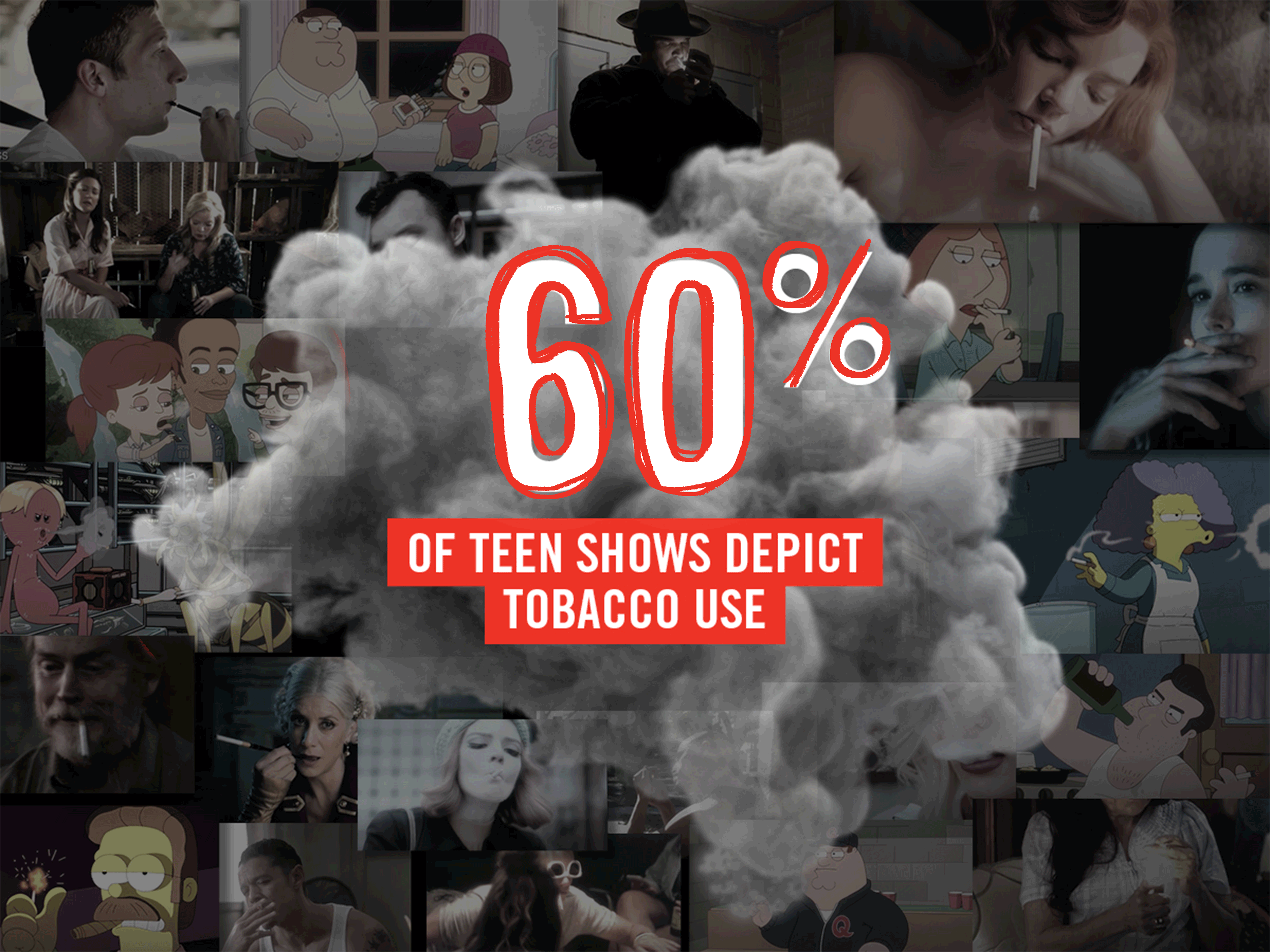
In March, the Truth Initiative released their fifth annual report on tobacco imagery in entertainment — and the findings were troubling, especially for teenagers. The report found that in 2020, young people consumed more video content than ever before. With that increase in viewership came unprecedented exposure to smoking and vaping imagery.

What You Need to Know
The report explains that 60% of popular teen shows featured images of tobacco. These top shows alone exposed an estimated 25 million young people to tobacco imagery in 2020. Of the 114 episodes with tobacco use, only one of them could be classified as “anti-smoking.” Half of these episodes glamourized smoking, associating it with wealth, power, success, harmlessness, rebellion and fun.
According to NORC’s latest analysis, over 47% of new movie releases in 2021, many of which were released directly on streaming services, featured tobacco use. The Truth Initiative explains that tobacco imagery in shows, movies, and music videos points to an overall problem: the renormalization and glamourization of smoking and vaping in media and pop culture.

How Should You Respond?
While we can’t prevent our kids from all exposure to harmful messaging, we can have thoughtful conversations about the realistic dangers of tobacco and vaping in response.
Your teen’s greatest weapon against tobacco is your willingness to talk candidly with them about the dangers of nicotine. The older they get, the more they’ll be exposed to casual smoking, both in the media and everyday life. Talk to them regularly. When these types of conversations become part of your home’s regular rhythm, it will feel more natural for your kids to open up and speak honestly about smoking. If you need tips for talking to your kids, check out these resources.
Until streaming services like Netflix take their pledge to limit tobacco exposure in their programming seriously, we’ll have to keep doubling down on our message: No matter how glorified these destructive habits may be in popular culture, the truth is far from glamorous.
You can download the full Truth Initiative annual report here.
How else does tobacco harm kids? Learn more here.